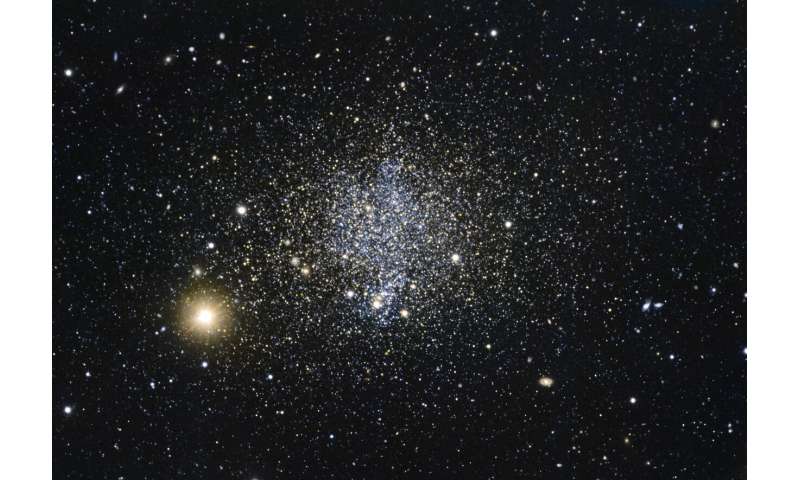#New insights into star formation in the smallest galaxies
“#New insights into star formation in the smallest galaxies”

The question of how small, dwarf galaxies have sustained the formation of new stars over the course of the Universe has long confounded the world’s astronomers. Now, an international research team has found that dormant small galaxies can slowly accumulate gas over many billions of years. When this gas suddenly collapses under its own weight, new stars are able to arise. The new work is published in Monthly Notices of the Royal Astronomical Society.
There are around two thousand billion galaxies in our Universe and, while our own Milky Way galaxy encompasses between two to four hundred billion stars, small dwarf galaxies contain only tens of thousands to a few billion stars. How stars are formed in these tiny galaxies has long been shrouded in mystery.
Now, a research team from Lund University, Sweden, has established that dwarf galaxies are capable of lying dormant for several billion years before starting to form stars again.
“It is estimated that these dwarf galaxies stopped forming stars around 12 billion years ago. Our study shows that this can be a temporary hiatus,” says Martin Rey, an astrophysicist at Lund University and the leader of the study.
Through high-resolution computer simulations, the researchers demonstrate that star formation in dwarf galaxies ends as a result of heating and ionization from the strong light of newborn stars across the Universe. Explosions of so-called white dwarfs—small faint stars made of the core that remains when normal-sized stars die—further contribute in preventing the star formation process in dwarf galaxies.
“Our simulations show that dwarf galaxies are able to accumulate fuel in the form of gas, which eventually condenses and gives birth to stars. This explains the observed star formation in existing faint dwarf galaxies, which has long puzzled astronomers,” states Rey.
The computer simulations used by the researchers in the study are extremely time-intensive: each simulation takes as long as two months and requires the equivalent of 40 laptop computers operating around the clock. The work is continuing with the development of methods to better explain the processes behind star formation in our Universe’s smallest galaxies.
“By deepening our understanding of this subject, we gain new insights into the modeling of astrophysical processes such as star explosions, as well as the heating and cooling of cosmic gas. In addition, further work is underway to predict how many such star-forming dwarfs exist in our Universe, and could be discovered by astronomical telescopes,” concludes Rey.
More information:
Martin P Rey et al. EDGE: from quiescent to gas-rich to star-forming low-mass dwarf galaxies, Monthly Notices of the Royal Astronomical Society (2020). DOI: 10.1093/mnras/staa1640
New insights into star formation in the smallest galaxies (2020, August 12)
retrieved 12 August 2020
from https://phys.org/news/2020-08-insights-star-formation-smallest-galaxies.html
This document is subject to copyright. Apart from any fair dealing for the purpose of private study or research, no
part may be reproduced without the written permission. The content is provided for information purposes only.
If you want to read more Like this articles, you can visit our Science category.
if you want to watch Movies or Tv Shows go to Dizi.BuradaBiliyorum.Com for forums sites go to Forum.BuradaBiliyorum.Com




